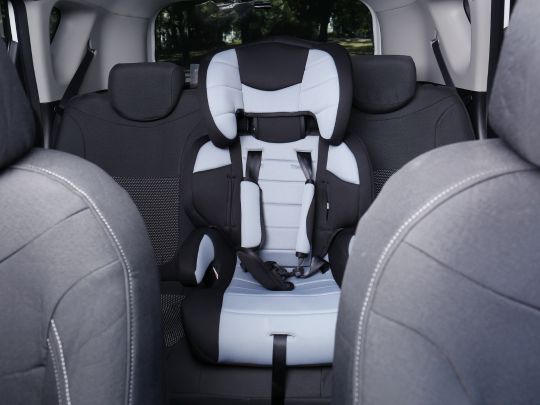Earlier this week, our Sherwood Ford team had the privilege of hosting a free informational clinic for young families regarding child car seat safety. There are a lot of factors out there that can make the daily drive hazardous, but the most important aspect of every ride is making sure that your children are safe and secure through everything that might arise. Because of this, today we’ll show you how to safety install a Child Safety Seat in your vehicle, as well as the right types of seats for your infant or toddler!
In the event of a crash, using a car seat properly can reduce the risk of serious injury to your child by 71 per cent. There are three main types of car seats available for your child – rear-facing, forward-facing, and booster seats; read below to learn more about each one!
Rear-Facing and Forward-Facing Safety Seat Installation and Usage Guidelines
If your child is between birth and one year old, below 10 kilograms in weight, and is not able to walk quite yet, you’ll want to have a rear-facing safety seat installed. If he or she is beyond the age of two years old, is able to walk, and has exceeded the maximum weight requirements for a rear-facing seat, a front-facing seat is the right call.

Before you get started, be sure that the seat is approved to be used in Canada, located in the back seat of your vehicle, and away from any air bags. There are two main methods to secure these types of seats, seen below:
- Use a Universal Anchorage System (UAS) to secure the car seat, making sure that its belt goes through the forward-facing belt path located on the bottom of the seat. Pull the UAS belt tight to ensure that your child’s seat does not rock back and forth easily.
- Use a seat belt to secure your car seat by snaking it through the forward-facing belt path on your car seat, then buckle it up tight. Like the UAS system, pull the lap belt tight enough that your car seat is secure.
Now, when buckling your child in the car seat, you’ll want to make sure that the slots that your harness straps go through are at or just below his or her shoulders, and that the chest clip is level with your child’s armpits. As soon as you buckle your child in, check that all harness belts are flat and snug; this greatly reduces the threat of danger as you drive.
Booster Seat Installation and Usage Guidelines
Your child’s safety needs don’t end once they’re too big for a forward-facing safety seat; between 18 to 36 kilograms, and until they reach 4 feet, 9 inches tall (or nine years of age), be sure to provide your child with a booster seat. Booster seats are designed to conform to your child’s body and give them extra protection on the road.
Most booster seats come with included tether straps as part of their packaging, and to safely install it, you’ll want to hook up said tether strap to the tether anchor in your vehicle. Keep it tight enough that the seat moves less than 2.5 centimetres in any direction – it needs to be snug so that your child will be properly secured.
You can strap in your child’s booster seat using your vehicle’s safety belt, and when doing so, be sure that the shoulder belt straps between your child’s neck and shoulder, and that the lap belt straps low over the hips.
More Of Our Community Involvement: Sherwood Ford Sends Sherwood Park Kids to Ford Small Stars Series
Contact Sherwood Ford for more Child Car Seat Safety Information
We could not have put on this event without the help of Andrew and Dana Daring, two incredible volunteers from St. John’s Ambulance Alberta. They hold free informational sessions on the third Wednesday of every month right here in Edmonton, and you’re free to call them at 800-665-7114 to register today. Also, be sure to give our Sherwood Ford team a call if you have any further questions about your child’s car seat.





